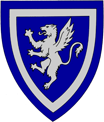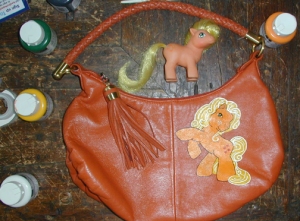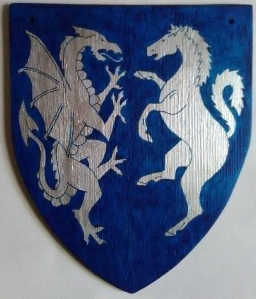Much of this blog is dedicated to the Heraldry I draw for specific clients. Aside from the Pennsic Reference Boards, I haven’t talked about the hours I spend at Pennsic and at home, consulting on heraldic art via Oscar and the Baby Heralds FaceBook group.
In addition to that, I am the Herald who envisioned the newest version of the Traceable Heraldic Art Project. Not long after I began working on it, Mathghamhain Ua Ruadháin stepped in to help. He has software that can convert line art into vector art, and the server space to host HeraldicArt.org.
Vector art is different from scans of line drawings because it is scaleable. If you take a photograph to a copy shop and make it twice as large, some of the details will blur due to the limitations of the DPI (Dots Per Inch) of the photo. Vector art is different because it can be enlarged and shrunk on a computer and not become blurry.
Making the new Traceable Art in vector format allows the artwork to be reproduced at any size or scale, from combat shields to banners and tabbards or list tree shields. Vector art allows people to have artwork that is more complicated than they can draw.
This project is enormous. It incorporates most of the Pennsic Traceable Art, as well as all the backgrounds for heraldic shields (called Field Divisions). Additionally, we are including heraldic artwork created by artists around the world.
One set of artistic compilations was created in 1994 by Herald Torric inn Bjarni. His work is incredibly detailed, but his use of shading and hatching are difficult to translate into vector art. One of my tasks as an artist is to take his artwork and turn it into drawings that are easily converted to vectors. This is a huge task, because he compiled his drawings in a way to save space and paper, often using dashed lines and small notes to indicate how alternate versions of a creature would be drawn. These are scans from a few of his drawings.

I have scanned these versions of dragons, and the other pieces that allow different variants to be drawn. The dragon has four legs, while the wyvern has only two. Additionally, Torric made notes on basilisks and cockatrices, which I also drew. These combinations resulted in drawing a baker’s dozen different variations of the same dratted dragon.
 Here are the first two dragons. The dragon on the left is Sejant, or in a seated pose.
Here are the first two dragons. The dragon on the left is Sejant, or in a seated pose.
The dragon on the right is Sejant Erect, or sitting with a raised limb.

In contrast, these two wyverns have only two legs. They are also displayed as Sejant and Sejant Erect.

With Torric’s note of the cockatrice head and the beginning of wings in the thumbnail drawing, I was able to piece together drawings. A cockatrice is a wyvern with the head of a cock.

A basilisk is only different from a cockatrice because it has a dragon’s head at the end of its tail.
After drawing eight pictures of similar creatures, I was delighted to draw these dragons Couchant, or crouching. The right dragon is Coucant Erect, or crouching with one limb raised.

And here are another two versions of the Couchant dragons, with their wings folded. Having many variations of heraldic animals can be helpful when artists are placing images within limited space.

Finally, here is the dragon Dormant, or sleeping. The Hogwarts motto “Draco dormiens nunquam titillandus” seems appropriate here, since you should never tickle a sleeping dragon.
I enjoy ending posts with a bit of humor, but a recent change to heraldic registration laws has removed sleeping animals from the list of registerable charges. Sleeping animals are hard to distinguish from one another, breaking the First Rule of Heraldry: Can I Identify That Shield in Combat/ The Barony of l’Ile du Dragon Dormant of Montreal, Canada features a sleeping dragon. Since its’ heraldry is already registered, the Sleeping Dragon stays.

 Mundanely, I went to school for Architecture. I took a number of artistic classes including photography and painting. I fell in love with acrylic paint, which was fast-drying, easy to work with, and could be cleaned with water. I have artistic friends who swear by oil paint. (I tend to swear at oil paint because it takes days to dry!)
Mundanely, I went to school for Architecture. I took a number of artistic classes including photography and painting. I fell in love with acrylic paint, which was fast-drying, easy to work with, and could be cleaned with water. I have artistic friends who swear by oil paint. (I tend to swear at oil paint because it takes days to dry!) Also, this stuff keeps indefinitely. Back in 2009, I was planning to attend the World Science Fiction Convention is Montreal. Author
Also, this stuff keeps indefinitely. Back in 2009, I was planning to attend the World Science Fiction Convention is Montreal. Author  This is the finished purse. I painted white highlights over Applejack’s hair, and added a black outline. This is exactly the same technique I use to paint heraldry onto shields. In fact, the bottle of yellow paint in this photo is the same one I’m using today. (The white bottle gave up its ghost for the Pennsic Heraldry Boards.)
This is the finished purse. I painted white highlights over Applejack’s hair, and added a black outline. This is exactly the same technique I use to paint heraldry onto shields. In fact, the bottle of yellow paint in this photo is the same one I’m using today. (The white bottle gave up its ghost for the Pennsic Heraldry Boards.)



 I refer to this piece as engineering, because it’s not simply a costume. I needed to have a lot of pockets to hold my notebook, components, tags, and props. I’d originally carried a shoulder bag, but it didn’t have enough pockets or enough volume. The front of this vest has four separate flat pockets, and two larger cargo pockets on the sides.
I refer to this piece as engineering, because it’s not simply a costume. I needed to have a lot of pockets to hold my notebook, components, tags, and props. I’d originally carried a shoulder bag, but it didn’t have enough pockets or enough volume. The front of this vest has four separate flat pockets, and two larger cargo pockets on the sides.

 May of the Heraldic Devices I draw are straightforward requests like “I want a lion and a boar” or “I want a cat with a book in blue and white.” One of the few real challenges I’ve had was a client who wanted a stag’s head within an “O.” She didn’t like how aggressive the stag in the
May of the Heraldic Devices I draw are straightforward requests like “I want a lion and a boar” or “I want a cat with a book in blue and white.” One of the few real challenges I’ve had was a client who wanted a stag’s head within an “O.” She didn’t like how aggressive the stag in the  The counterpoint to aggressive diagonal lines is using soft circles. (Horizontal and vertical lines are more neutral.) So I doodled some circles, trying to make a stag’s head with as many circular elements as possible. I made a point of keeping the head and the circle of the horns as equal in size as possible, since the entire head needed to fit in an “O.” If either the horns or the head had greater size, it would make the resulting design seem unbalanced.
The counterpoint to aggressive diagonal lines is using soft circles. (Horizontal and vertical lines are more neutral.) So I doodled some circles, trying to make a stag’s head with as many circular elements as possible. I made a point of keeping the head and the circle of the horns as equal in size as possible, since the entire head needed to fit in an “O.” If either the horns or the head had greater size, it would make the resulting design seem unbalanced.